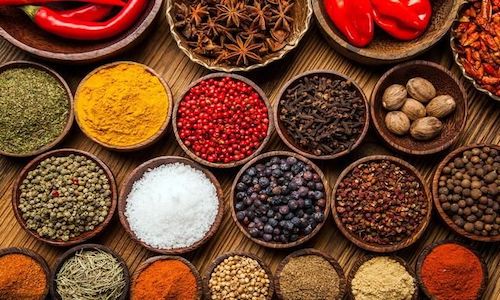
Chinese cuisine is famous for its rich flavors, diverse ingredients, and balanced seasoning. Understanding the essential seasonings and condiments used in Chinese cooking can help you create authentic and delicious dishes. Here’s a complete guide to common Chinese cooking ingredients and how to use them properly.
1. Salt
- Always add salt toward the end of cooking. Adding it too early allows the salt to penetrate deeper, meaning you might use more than necessary without realizing it.
- Other uses: Salt can clean tea cups, disinfect fruits and vegetables when soaked in light saltwater.
2. Soy Sauce
- Dark Soy Sauce: Used for color and enhancing umami flavor, especially in braised dishes, stews, and marinades.
- Light Soy Sauce: Mainly for seasoning; best for stir-fries, cold dishes, and dipping sauces.
3. Vinegar
Vinegar adds acidity, enhances flavor, and has multiple functions:
- Removes fishy odors: A splash of vinegar while cooking fish neutralizes the fishy smell.
- Reduces gaminess: When cooking lamb, a small amount of vinegar removes the strong gamey scent.
- Balances spice: Too spicy? A dash of vinegar can tone it down.
- Enhances sweetness: A little vinegar in sweet dishes makes them taste even sweeter.
- Speeds up cooking: Adding vinegar to meat, seaweed, or potatoes helps them cook faster.
- Prevents oxidation: Vinegar keeps eggplants from turning black.
- Natural preservative: Adding vinegar to raw fish helps prevent spoilage.
Buying tip: Opt for naturally brewed vinegar instead of synthetic ones. Fermented black vinegar has a deep, complex taste, while artificially mixed vinegar has a sharp, unpleasant acidity.
4. Cooking Wines & Liquors
- Shaoxing Wine: Commonly used to marinate meats and remove strong odors. Adding it to beaten eggs enhances flavor.
- Baijiu: Used in some marinades and to enhance pickling. Can also be used in braised dishes.
5. Fermented & Sauce-Based Seasonings
- Sweet Bean Sauce: Made from flour, water, and salt; great for dishes like Beijing-style shredded pork.
- Doubanjiang: A fermented broad bean paste, essential in Sichuan cuisine (e.g., Mapo Tofu, Twice-Cooked Pork, and Spicy Hot Pot).
- Fermented Black Beans: Used in Cantonese dishes like "Steamed Pork Ribs with Black Bean Sauce."
- Tomato Paste: Made from pure tomatoes; used in sweet-and-sour dishes like Sweet and Sour Fish or Spare Ribs.
- Ketchup: A seasoned version of tomato paste, often used for dipping or Western-style Chinese dishes.
- Sesame Paste: A thick, aromatic paste made from ground sesame seeds; commonly used in dipping sauces and cold noodle dishes.
6. Sugars & Sweeteners
- White Sugar: Extracted from sugarcane or beets.
- Brown Sugar: Less refined, with additional nutrients.
- Rock Sugar: Used for braised dishes to enhance color and shine.
- Honey: Used in marinades and glazes (e.g., honey-glazed chicken wings). Honey should not be heated above 60°C to preserve nutrients.
7. Spices & Aromatics
- Dried Chili Peppers: Used for stir-frying and making chili oil.
- Sichuan Peppercorn: Essential for Sichuan cuisine, adding a numbing sensation.
- Star Anise: Commonly used in braised meats and soups.
- Bay Leaves: Used in stews and braises for added fragrance.
- Cinnamon: Enhances meat dishes with a warm aroma.
-
Black & White Pepper:
- Black pepper is ideal for steaks and roasted meats.
- White pepper is milder and works well in soups.
- Cumin : A key spice for grilling and roasting lamb.
- Five-Spice Powder: A mix of star anise, cloves, cinnamon, Sichuan peppercorn, and fennel seeds; perfect for stews and roasts.
- Curry Powder: A blend of turmeric, coriander, cumin, and other spices; used in dishes like curry beef or curry fried rice.
8. Pickled & Fermented Ingredients
- Fermented Tofu : A strong-flavored preserved tofu used as a condiment or seasoning.
- Chopped Pickled Chili: A Hunan specialty, commonly used for "Steamed Fish Head with Pickled Chili."
- Pickled Chili Peppers: A Sichuan favorite, essential in dishes like Yu-Xiang (Fish-Fragrant) Pork.
9. Starches & Thickeners
Common starches include potato starch, cornstarch, mung bean starch, wheat starch, and sweet potato starch. They are used for:
- Thickening sauces: Used in dishes like stir-fried beef with oyster sauce.
- Creating crispy coatings: Used for fried foods like crispy pork ribs.
- Tenderizing meat: A starch slurry helps retain moisture in meat dishes.
10. Umami Enhancers
- MSG & Chicken Powder: Common umami boosters in Chinese cooking. While some prefer to avoid MSG, chicken powder is often used as a substitute.
- Oyster Sauce: A rich, slightly sweet sauce made from oyster extracts; great for stir-fries and marinades.
At ChefCoca, we provides all kinds of kitchen equipment for Chinese cuisine, trusted by most Chinese restaurants in Canada.


